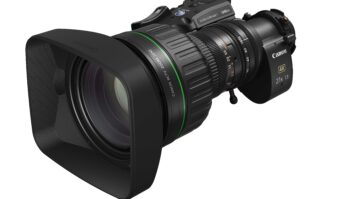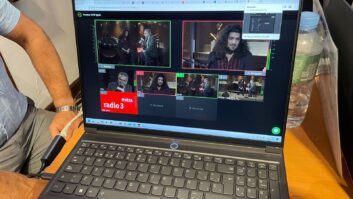
The last few years have seen a major shift in how consumers access and enjoy their favourite TV shows and films, and it’s all due to the explosion of competing on-demand and OTT service providers. We now live in a world where the ‘anytime, anywhere, any device’ concept reigns supreme — so much so that Netflix is now the most popular viewing method of choice for viewers, according to recent research from Qualtrics.
As the OTT and on-demand market becomes more saturated than ever, each provider must try and stand out among the rest of the competition. Some might focus their efforts into creating an attractive and intuitive user interface, while others might try to secure a content catalogue of the highest quality, and these are both valuable ways of building a customer base. But something more important than both of these things is delivering the best possible quality of service.
Without ensuring a high quality of service, consumers simply wouldn’t be able to enjoy the UI that has been painstakingly crafted, or the TV series that persuaded them to sign up, without unwanted latency, lag, poor image quality or other frustrations. With consumers more aware of the latest technologies such as 4K, HDR and HFR, it is more important than ever to deliver this quality of content without issues if OTT providers want to grow their audience.
But delivering high-quality, high-resolution content to an expanding customer base while operating within the same bandwidth capacity is tricky business, and one factor is often sacrificed to benefit the other.
So why not just invest in network capacity, then? Simply put, many of these OTT providers can’t afford to. With users paying a rough average of $10 per month for a subscription to a single service, the businesses themselves only have a limited investment to work with, and increasing bandwidth capacity can often cost millions of dollars. This can throw the sustainability of the business into doubt.
But video compression can save the day. This dramatically reduces the bandwidth required for any given piece of content to be delivered to users, thereby increasing the potential of the existing bandwidth capacity. From here, providers can use the extra bandwidth to either increase the quality of the video or serve more viewers simultaneously — and sometimes operators are able to do both. This is a win-win for businesses, who can continue to grow their OTT offering while achieving peace of mind that their model is sustainable. After all, smaller costs and faster growth equals fast profit.
Some of the latest codecs such as HEVC and AV1 can provide up to 50 per cent bandwidth gain when compared to H.264 for a given video quality. While HEVC is a well-known compression standard that has been on the marketplace for several years now, AV1 is a work-in-progress that has been developed by the Alliance for Open Media as an open, royalty-free codec applicable for broadcast and OTT workflows. It’s scheduled to be released in early 2018.
There are also developments being made in the artificial intelligence and machine learning fields that will allow future compression technology to further reduce the size of content files, which would in turn allow the same bandwidth capacity to deal with even more traffic. This could revolutionise compression technology as we know it.
This future-facing iteration of the technology would analyse video stream complexity in real-time and recommend the best encoding parameters to apply in order to achieve to constant quality rate across content. This is a huge leap from the ‘Constant Bit Rate’ approach we are currently used to, to a ‘Constant Quality Rate’ stance.
The compression gains that can be achieved from this AI-enabled technology are extremely significant. Files can be reduced by up to 60 per cent of their previous compressed size, and because there is no CPU penalty involved broadcasters don’t need to modify their existing IT infrastructures in order to reap the benefits. The machine learning element of the technology also means that, the more you encode content, the better the technology gets at optimising each compression.
While OTT providers may currently have very differing opinions when it comes to what makes their offering better than the rest of the competition, the real key to OTT success lies in next-generation compression technology. This enables providers to guarantee the quality of service that consumers are looking for — whether they are aware of it or not — and is the foundation upon which a happy and loyal audience base can be built.







